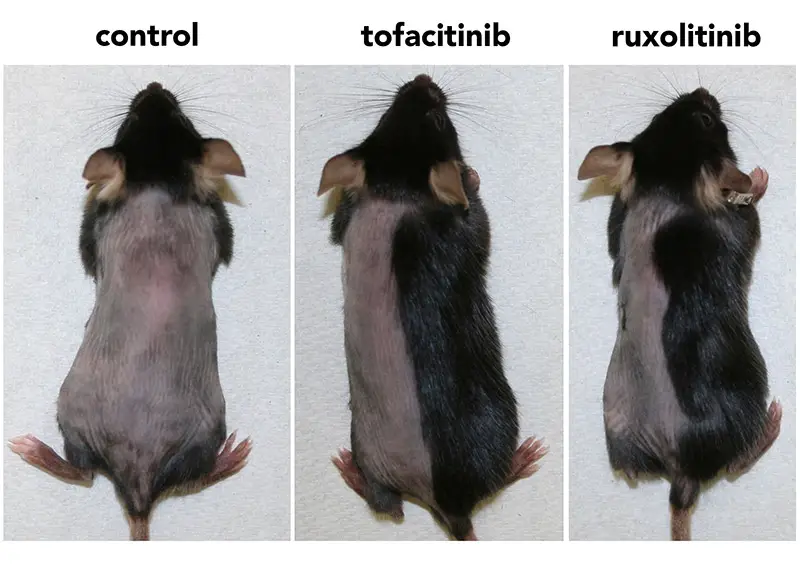
26th October 2015 Blocking enzymes in hair follicles promotes hair growth Inhibiting a family of enzymes inside hair follicles that are suspended in a resting state restores hair growth, a new study from researchers at Columbia University Medical Centre has found.
In experiments with mouse and human hair follicles, Angela Christiano, PhD, and colleagues found drugs that inhibit the Janus kinase (JAK) family of enzymes promote rapid and robust hair growth when applied to the skin. Their research is published in the journal Science Advances. The study raises the possibility that JAK inhibitors could be used to restore hair growth in forms of hair loss induced by male pattern baldness, and other types of hair loss that occur when hair follicles are trapped in a resting state. “What we’ve found is promising, though we haven’t yet shown it’s a cure for pattern baldness,” said Dr. Christiano. “More work needs to be done to test if JAK inhibitors can induce hair growth in humans using formulations specially made for the scalp.” Christiano and her team discovered the effect of JAK inhibitors on hair follicles by accident, when they were studying alopecia areata, a form of hair loss that's caused by an autoimmune attack on the hair follicles. Christiano and colleagues reported last year that JAK inhibitors shut off the signal that provokes the autoimmune attack, and that oral forms of the drug restore hair growth in some people with the disorder. In the course of those experiments, Dr. Christiano noticed that mice grew more hair when the drug was applied to the skin than when the drug was provided systemically. This suggested JAK inhibitors might be doing something to the hair follicles in addition to stopping the immune attack. Hair follicles do not produce hair steadily, but cycle between dormant and active phases. Looking more closely at normal mouse hair follicles, it was found that JAK inhibitors rapidly awakened resting follicles out of dormancy, triggering the normal reawakening process. Mice treated for five days with one of two JAK inhibitors sprouted new hair within 10 days – greatly accelerating the onset of hair growth. No hair grew on control mice within the same amount of time. "There aren't many compounds that can push hair follicles into their growth cycle so quickly," said Dr. Christiano. "Some topical agents induce tufts of hair here and there after a few weeks, but very few compounds have this potent an effect so quickly." It’s likely that the drugs act on the same pathways in human follicles as they do in mice, suggesting they could induce new hair growth and extend the growth of existing hairs in humans. However, whether JAK inhibitors can reawaken hair follicles that have been frozen in a resting state because of androgenetic alopecia (which causes male and female pattern baldness) or other forms of hair loss is still unknown. So far, all the experiments have been conducted in normal mice and human follicles. Experiments to address hair follicles affected by hair loss disorders are now underway.
Comments »
|







